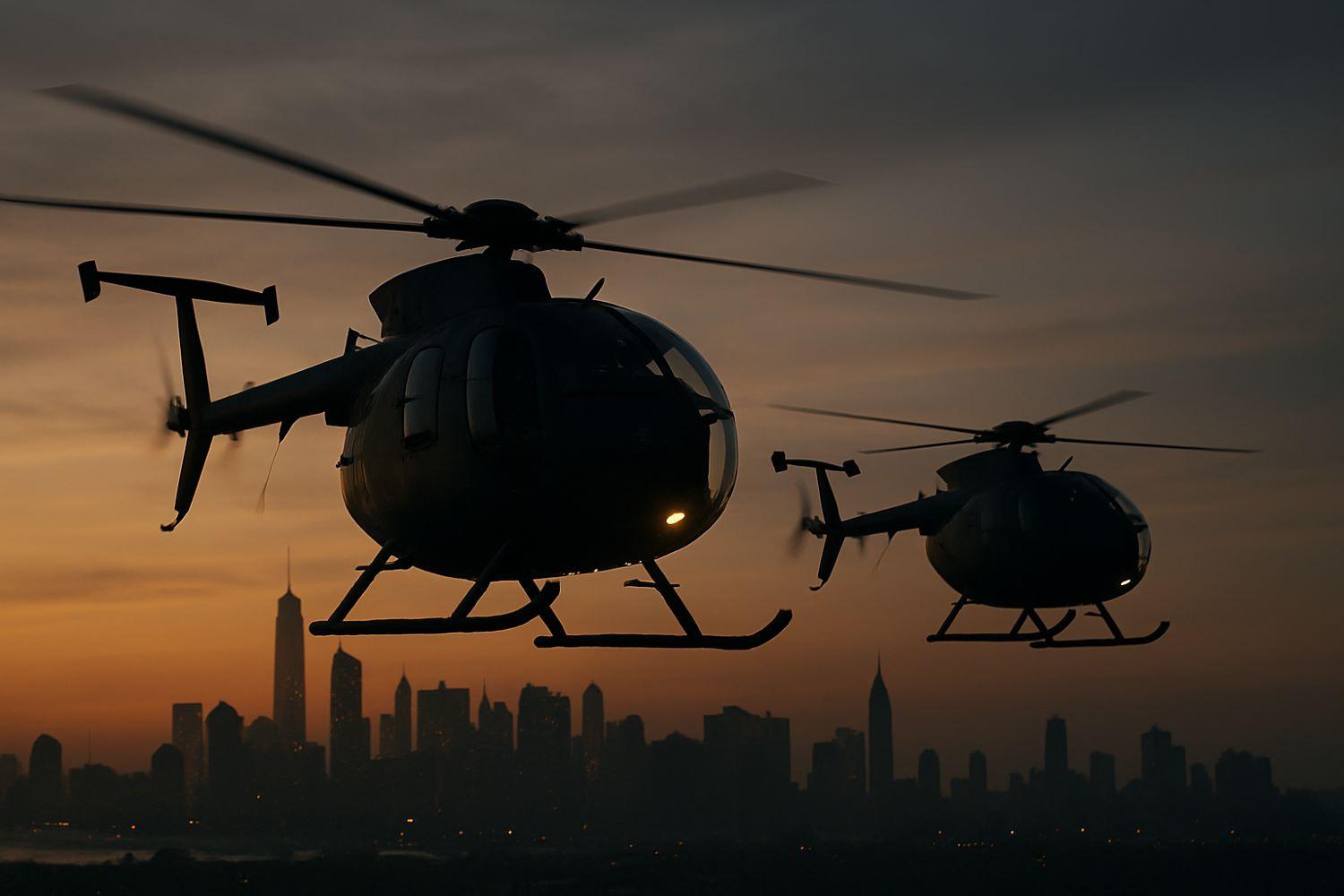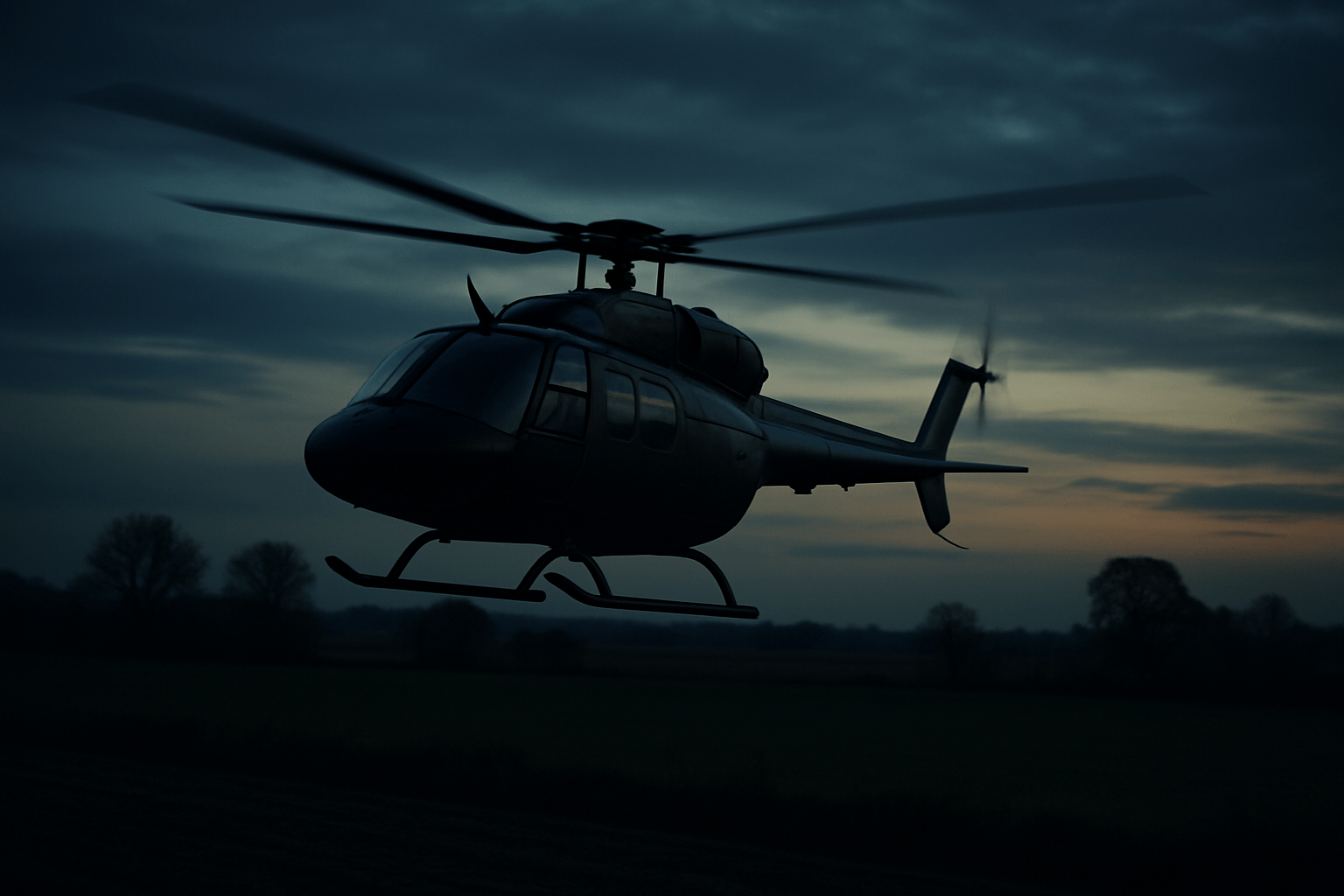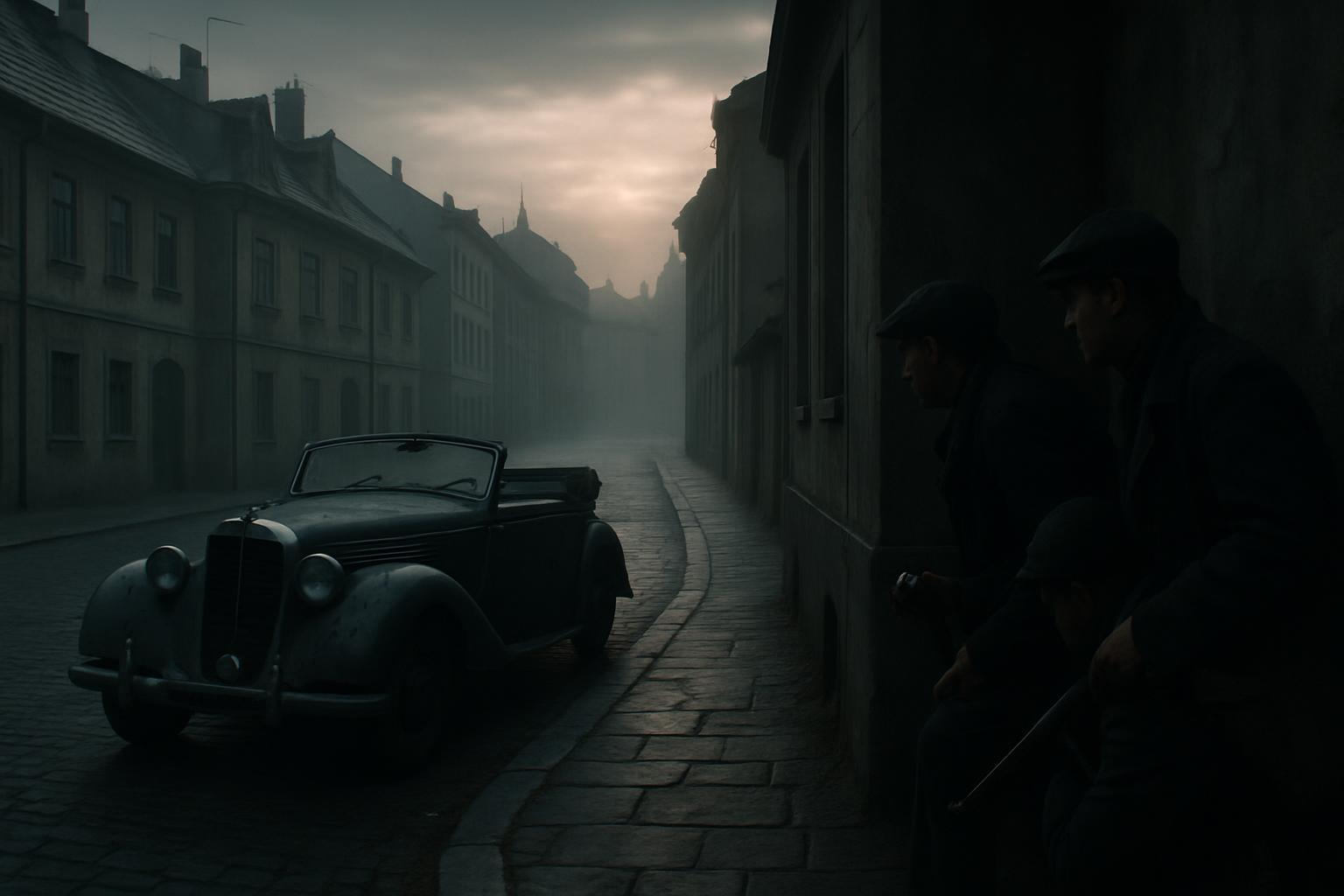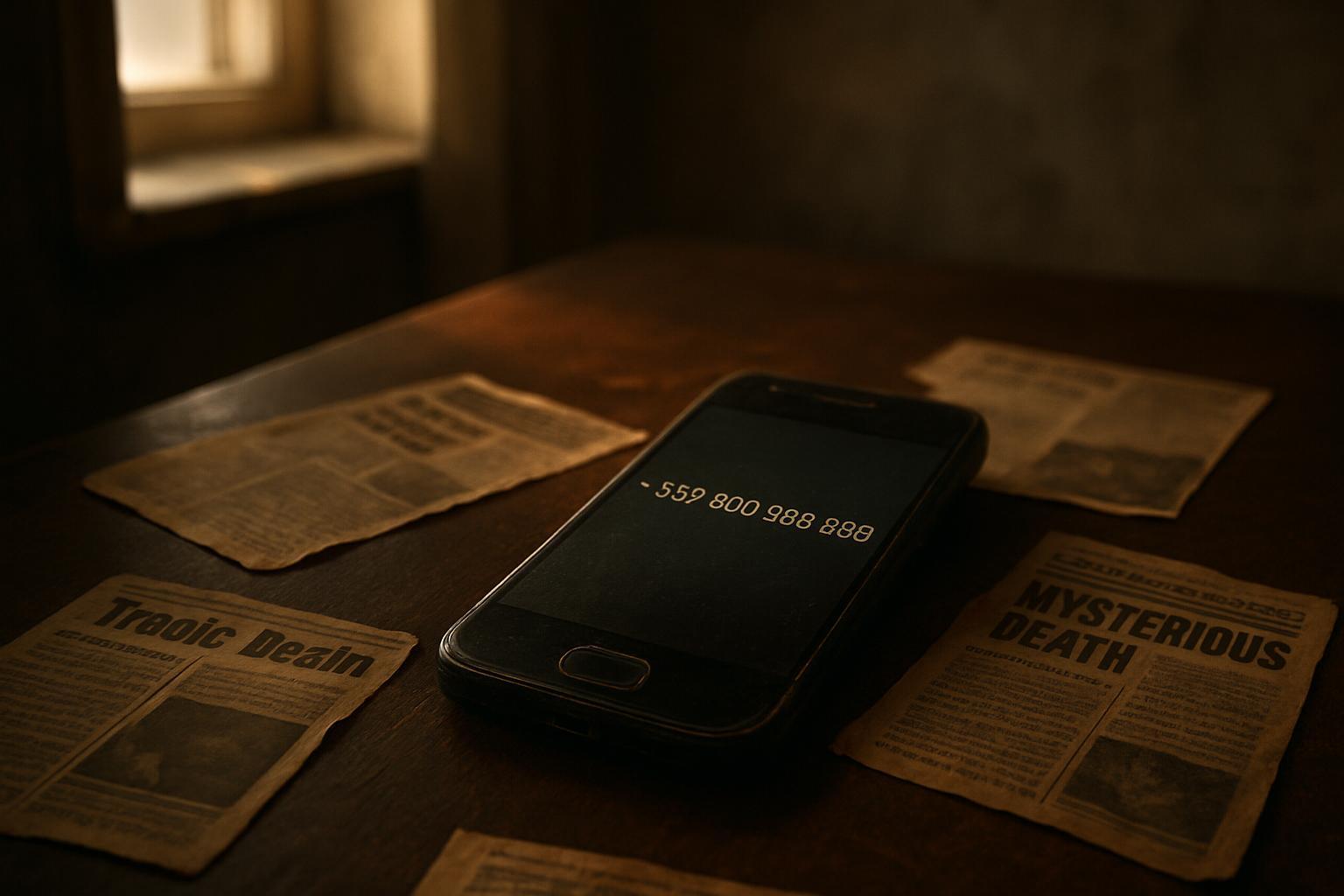The image of silent, dark helicopters gliding across the night sky has long captured the public’s imagination. While some claim these “black helicopters” are proof of government surveillance or covert operations, others see them as the stuff of urban legend. Where does the truth really lie? Let’s explore the origins, evidence, and reality behind this enduring mystery.
The Birth of a Modern Myth
The story of black helicopters did not start overnight. In the late 1980s and early 1990s, whispers grew, fed by a mix of real-world events, new technology, and popular culture. But why do these tales persist, and what keeps them alive?
Early Reports and Fear of Surveillance
During the final years of the Cold War, anxiety ran high. Americans worried about government power and privacy loss. In this climate, reports began to circulate of unmarked, black helicopters appearing over rural land. Farmers, especially in the Midwest, claimed these aircraft flew low, sometimes chasing livestock or scaring away birds.
This was also a period of debate over land management and conservation. Some believed these helicopters were part of secret operations to gather environmental data or enforce regulations. These ideas quickly spread through newsletters, talk radio, and face-to-face conversations.
Cultural Influences Fuel Suspicion
At the same time, movies and TV shows fueled the fire. Films like “Blue Thunder” and “Capricorn One” used black helicopters to signal danger and secrecy. The imagery stuck, finding its way into the public mind. Stories often drew on real programs, such as aerial law enforcement or search-and-rescue missions, but colored them with conspiracy.
As concern over government surveillance grew, so did the belief that black helicopters were more than ordinary aircraft. These fears found a home in books, online forums, and late-night radio shows devoted to fringe ideas.
Where Fact Meets Fiction: Actual Uses of Black Helicopters
While some claims about black helicopters have little evidence, there is a grain of truth in the stories. Certain government and military units do use dark-colored, sometimes unmarked helicopters for practical reasons. However, most operations are not as secretive as many think.
Law Enforcement and Public Safety
Police and federal agencies often use helicopters in their work. Aircraft may be painted dark green or black to reduce glare or improve longevity. The U.S. Customs and Border Protection (CBP), for example, has used black helicopters to patrol borders and fight drug smuggling. In cities, police may deploy similar helicopters for surveillance or to track suspects.
Sometimes, markings are minimal or hard to see from the ground. This can make the helicopters appear “unmarked” at night, leading to more rumors. In most cases, however, they perform routine law enforcement duties, like assisting ground units or searching for missing people.
Military Use and Training
The U.S. military—and, in particular, special operations units—sometimes use black helicopters for night missions. Aircraft like the MH-60 Black Hawk or specialized versions of the UH-60 are painted with low-reflectance coatings to avoid detection. These helicopters support operations that require stealth, such as hostage rescues or the insertion of special forces.
Joint training exercises often take place over both rural and urban areas. For residents unfamiliar with military protocols, the sudden appearance of black helicopters at night can be unsettling. However, records show that most of these flights are scheduled and coordinated with local agencies.
Other Government Agencies
Some agencies, such as the Department of Energy, maintain small air fleets for the transport of sensitive materials or emergency response. These helicopters may be painted dark colors for many of the same reasons as their military counterparts. While security is often tight, the flights are neither illegal nor aimed at mass surveillance.
Signature Characteristics: Why Black?
Why are so many government and military helicopters painted black in the first place? The choice of color is less about secrecy and more about function.
- Camouflage: Black or dark green helps aircraft blend into nighttime surroundings, making them harder to see from the ground or air during missions. This is critical for safety during covert operations.
- Lower Maintenance: Dark colors hide dirt and wear, reducing the need for frequent cleaning. This is useful for aircraft that land in a variety of environments.
- Tradition and Policy: Some branches have long used black or dark paint for certain units. This is especially true for elite or specialized teams, where visual uniformity can make organization easier during multi-aircraft operations.
Despite the practical reasons behind their appearance, the dramatic look of these helicopters makes them a natural target for speculation and myth-building.
Analyzing Popular Claims: Surveillance or Scare?
Many stories about black helicopters fall into two themes: surveillance of private citizens and involvement in secret government operations. Let’s break down these ideas using the evidence available.
Are We Being Watched from Above?
Surveillance by helicopter is real but far more limited than rumors suggest. Most law enforcement aerial surveillance is legal, visible, and focused on specific crimes. Police must often get warrants for closer inspections, especially if seeking information not visible from public areas. The Supreme Court has ruled that viewing an open area from public airspace is not a violation of privacy, but searching private property without reason is not allowed.
The cost and risk of flying helicopters for surveillance means they are used for targeted cases, not widespread monitoring. Drones and satellites are more cost-effective for gathering broad data. When helicopters fly over neighborhoods at night, they usually support a specific investigation or public safety goal, not mass surveillance.
Covert Operations and Black Projects
Some black helicopters support covert military actions, especially when the U.S. government wants to keep a low profile. Examples include the 2011 raid on Osama bin Laden’s compound, where a stealth-modified Black Hawk helicopter was used. Such missions are rare and carried out for clear strategic reasons.
While details are often classified before, during, and after these missions, independent investigations and journalists have later confirmed many of the basic facts. The use of black or unmarked helicopters in these cases is supported by strong evidence—but these incidents represent a tiny fraction of military air operations.
The Role of Media and Misinformation
Media coverage has played a huge role in keeping the black helicopter myth alive. Sensational stories, viral videos, and news reports often blur the line between fact and fiction.
Sightings Amplified by the Internet
In the age of smartphones, unusual aircraft sightings can go viral in minutes. A blurry photo or video of a low-flying helicopter, posted online, quickly finds an audience ready to believe the worst. Blogs and social media accounts devoted to conspiracies pick up and amplify unverified stories.
Often, these claims link routine helicopter activity to broader theories about government overreach, mind control, or secret international pacts. These ideas tend to focus on fear and suspicion rather than evidence, making them hard to correct even with solid facts.
Media Responsibility and Public Doubts
Some news outlets have attempted to debunk common myths by featuring experts in aviation, law enforcement, or national security. Others, however, repeat unproven claims for ratings or clicks. This mixed messaging keeps the debate active and fuels ongoing mistrust between the public and government institutions.
Case Studies: Notable Incidents
Certain incidents have helped cement the place of black helicopters in American folklore. Let’s look at a few examples to see how facts often get distorted.
Helicopters over Cattle Ranches
In the 1990s, several ranchers in the Midwest reported black helicopters flying over their land, sometimes soon after incidents of cattle mutilation. Newspapers and radio programs soon linked the helicopters to secret government experiments. Later investigations showed most helicopters belonged to local police or wildlife agencies monitoring land use. No direct link to the mutilations was found, but the timing fueled suspicion.
Jade Helm 15
The 2015 military exercise known as Jade Helm 15, conducted in several Southwestern states, sparked intense public debate. Locals reported seeing dark helicopters and unmarked vehicles. Conspiracies about martial law and mass surveillance spread, fueled by social media. In the aftermath, the military confirmed that the exercise was standard special forces training, coordinated with state and local officials, with no intent to violate citizens’ rights.
Urban Military Training Exercises
From time to time, U.S. special operations forces conduct training in urban areas for realism. In 2019, low-flying black helicopters startled residents in Los Angeles, Atlanta, and Houston during drills. The military gave advance notice to city officials, but many residents remained unaware. News and videos spread quickly, leading to confusion and fresh rumors.
Technology and the Future of Aerial Surveillance
As technology advances, the way government and law enforcement use the airspace will continue to change. Drones now play a larger role in surveillance and reconnaissance. They are cheaper, quieter, and less visible than helicopters. At the same time, improvements in commercial satellite imaging offer new challenges for privacy advocates.
Helicopters will likely remain part of the toolkit for missions that require speed, accuracy, or heavy lifting. Their high visibility, while sometimes frightening, also serves as a reminder that oversight matters. As laws evolve, so too must the systems for keeping government power in check.
Public Perception and Ongoing Debate
Surveys show that many people still distrust government authorities, especially when actions are not explained clearly. With the rise of “fake news” and echo chambers online, myths about black helicopters may never fully fade. However, open communication, fact-checking, and public access to flight records can help build trust.
Organizations such as the Federal Aviation Administration keep records of most aircraft movements. They also have rules governing the use of unmarked or military aircraft. While some missions are kept confidential for national security, the majority are documented and subject to review if concerns arise.
The Line Between Security and Secrecy
The debate over black helicopters speaks to a broader concern: how much secrecy is necessary for security, and when does it cross a line? While some missions must remain confidential to protect lives, excessive secrecy breeds suspicion. The real solution may lie in balancing these interests—ensuring oversight without risking safety or mission success.

How to Identify the Truth Behind a Sighting
If you see a black helicopter overhead, how can you tell whether there is a reason for concern—or if it’s just another day in the sky? Here are a few steps to keep in mind:
- Check with Local News: Media outlets often report scheduled flights or police activity.
- Look for Markings: Even at night, you may spot numbers or insignia if the helicopter passes close enough. Many “unmarked” helicopters are only hard to see from a distance.
- Contact Authorities: Police or city officials can confirm if a training or rescue operation is underway.
- Review Social Media Responsibly: Try to confirm images or videos with more than one source before accepting a claim as fact.
Debunking Common Myths
- No evidence supports claims that black helicopters spray chemicals for mind control or weather manipulation.
- Almost all U.S. government flights are logged and can be traced if needed.
- The use of black paint is a practical choice, not proof of sinister plans.
- Most “covert” flights linked to events like jade Helm were pre-approved and coordinated with local agencies.
A Global Perspective: Is This Phenomenon Only American?
Though most black helicopter stories come from the United States, other countries have reported similar rumors. In the United Kingdom and Australia, for example, police and military forces use dark helicopters for special missions. Local fears often echo those in America, linking these aircraft to secretive activity or government overreach.
Yet, investigations in these countries almost always reveal that the helicopters support disaster response, law enforcement, or authorized military drills. Global aviation standards typically require clear identification, and violations are rare.
The Science of Seeing What We Fear
Why are we drawn to black helicopters as symbols of secrecy and power? Psychologists suggest that people are more likely to notice—and remember—striking or unusual sights, especially at night. When we cannot explain what we see, our minds fill the gap with theories drawn from culture, media, and personal beliefs.
This process creates a feedback loop. The more we hear stories linking black helicopters to secret activity, the more likely we are to interpret any sighting as proof of a conspiracy.
Steps Toward Greater Transparency
Some agencies have begun responding to public worries with more openness. For example, law enforcement in several cities now alert residents before conducting nighttime helicopter exercises. Military units sometimes hold community meetings to explain their presence and answer questions.
Greater transparency does not eliminate secrecy for all missions, but it helps build a sense of trust. Over time, a realistic understanding of helicopter operations can chip away at the myth.
A Sky Full of Stories and Reality
The mystery of black helicopters taps into our deepest concerns about privacy, security, and the unknown. While there is some basis in real operations, most of the rumors stem from misunderstandings or sensational stories. By learning the facts and asking good questions, we can better separate aerial fiction from grounded reality—and remain alert without falling prey to fear.




